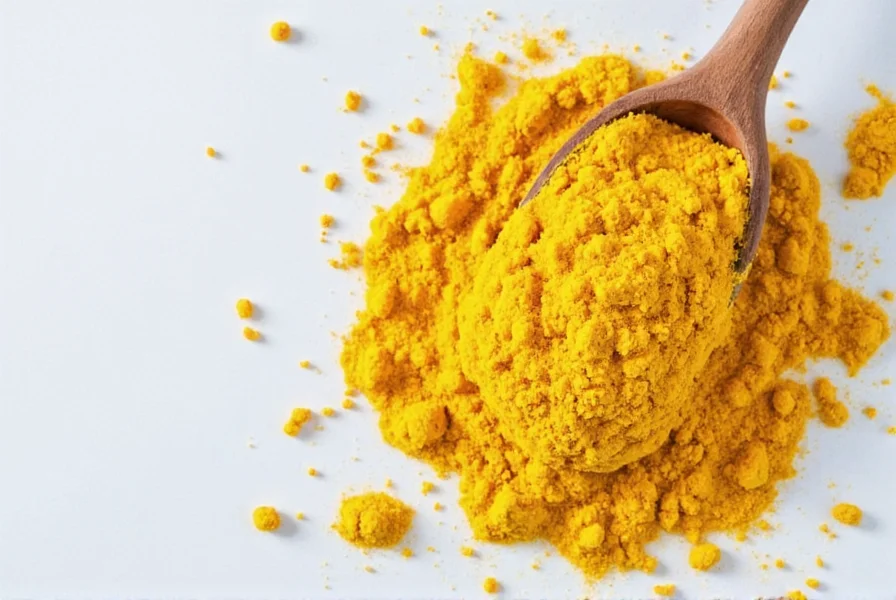Combining turmeric with milk creates a powerful functional beverage known as golden milk or haldi doodh in Ayurvedic tradition. This ancient remedy has gained significant popularity in Western wellness circles, but what exactly makes this combination so beneficial? The synergy between these ingredients creates health advantages that neither provides alone, particularly regarding inflammation reduction and nutrient absorption.
The Science Behind Turmeric's Active Compound
Curcumin, turmeric's primary bioactive compound, delivers most of the spice's celebrated health benefits. However, curcumin faces a significant challenge: poor bioavailability when consumed alone. Research shows that curcumin has limited absorption in the digestive tract and rapid metabolism, which significantly reduces its effectiveness. This is where milk plays a crucial role in enhancing turmeric's benefits.
Why Milk Enhances Turmeric's Effectiveness
The fat content in milk dramatically improves curcumin absorption. Scientific studies demonstrate that consuming curcumin with fats can increase its bioavailability by up to 2000%. The lipids in milk help dissolve curcumin, which is fat-soluble, allowing for better intestinal absorption and systemic circulation. This explains why traditional preparations of turmeric remedies almost always include some form of fat.

Evidence-Based Health Benefits of Milk and Turmeric
Research supports several specific health benefits from regularly consuming milk and turmeric:
| Benefit | Scientific Support | Recommended Consumption |
|---|---|---|
| Anti-inflammatory effects | Multiple studies show curcumin reduces inflammatory markers like CRP and IL-6 | 400-500mg curcumin daily (about 1-2 tsp turmeric) |
| Joint pain relief | Clinical trials demonstrate effectiveness comparable to NSAIDs for osteoarthritis | Daily consumption for 8-12 weeks |
| Improved sleep quality | Milk's tryptophan combined with turmeric's anti-inflammatory effects | Evening consumption 1-2 hours before bed |
| Enhanced antioxidant protection | Curcumin boosts body's natural antioxidant enzymes | Regular daily consumption |
Traditional Preparation Methods and Modern Adaptations
Traditional golden milk preparation involves simmering turmeric with milk and complementary spices. For maximum benefit, follow these evidence-based preparation tips:
- Add a pinch of black pepper (piperine increases curcumin absorption by 2000%)
- Use whole milk or add healthy fats like coconut oil for better curcumin solubility
- Gently heat the mixture (avoid boiling to preserve curcumin integrity)
- Include a small amount of fat (1-2 tsp) to enhance bioavailability
Safety Considerations and Potential Side Effects
While milk and turmeric is generally safe for most people, certain precautions are necessary:
- Individuals with gallbladder issues should consult a healthcare provider before regular consumption
- Those taking blood thinners should exercise caution as turmeric has mild anticoagulant properties
- People with dairy sensitivities can substitute with full-fat coconut milk for similar absorption benefits
- Excessive consumption (more than 8 grams of turmeric daily) may cause digestive discomfort
Maximizing the Benefits: Practical Consumption Guidelines
For optimal results when preparing turmeric milk:
- Use high-quality turmeric with at least 3% curcumin content
- Mix 1 teaspoon of turmeric powder with 1 cup of warm (not boiling) milk
- Add 1/4 teaspoon black pepper to significantly enhance absorption
- Include 1 teaspoon of healthy fat like coconut oil or ghee
- Consume consistently for at least 4-6 weeks to notice significant benefits

Understanding the Research Limitations
While numerous studies support the benefits of turmeric and milk combinations, it's important to understand the current research limitations. Most clinical trials use concentrated curcumin supplements rather than dietary turmeric, making direct comparisons challenging. Additionally, individual responses vary based on genetics, overall diet, and health status. The anti-inflammatory effects of regular golden milk consumption appear most consistent for mild to moderate inflammation rather than severe inflammatory conditions.
Integrating Golden Milk into Your Wellness Routine
For those seeking natural approaches to support overall wellness, incorporating turmeric milk into your daily routine offers a simple, evidence-informed strategy. The combination provides a gentle, food-based approach to reducing inflammation and supporting various bodily systems. Unlike pharmaceutical interventions, golden milk offers these benefits with minimal risk of side effects when consumed in appropriate amounts. Consider enjoying this traditional beverage as part of a comprehensive approach to health that includes balanced nutrition, regular exercise, and adequate sleep.
Does milk really increase turmeric absorption?
Yes, scientific research confirms that the fat content in milk significantly enhances curcumin absorption. Studies show that consuming curcumin with fats can increase its bioavailability by up to 2000% compared to consuming it without fat. The lipids in milk help dissolve curcumin, which is fat-soluble, allowing for better intestinal absorption and systemic circulation.
How much turmeric milk should I drink daily for health benefits?
For optimal benefits, most research suggests consuming 400-500mg of curcumin daily, which equates to approximately 1-2 teaspoons of turmeric powder in 8 ounces of milk. Consuming this amount once daily, preferably in the evening, provides consistent exposure to curcumin's beneficial compounds while supporting sleep quality.
Can I use non-dairy milk with turmeric for the same benefits?
Yes, you can achieve similar absorption benefits with full-fat non-dairy alternatives. Coconut milk, which contains medium-chain triglycerides, works particularly well as it provides the necessary fat content for curcumin absorption. Almond or soy milk can be used but should be combined with an additional fat source like coconut oil or ghee to ensure proper curcumin solubility and absorption.
How long does it take to notice benefits from drinking turmeric milk?
Most people begin noticing subtle benefits within 2-4 weeks of daily consumption, with more significant effects typically appearing after 6-8 weeks. Research on curcumin's anti-inflammatory effects shows measurable reductions in inflammatory markers after 4-8 weeks of consistent use. For joint pain relief, studies indicate noticeable improvement after 8-12 weeks of regular consumption.
Are there any medication interactions with turmeric milk I should know about?
Turmeric may interact with blood thinners like warfarin due to its mild anticoagulant properties. It might also affect diabetes medications by potentially lowering blood sugar further. Individuals taking these medications should consult their healthcare provider before regularly consuming turmeric milk. Those with gallbladder issues should also exercise caution as turmeric may stimulate bile production.











 浙公网安备
33010002000092号
浙公网安备
33010002000092号 浙B2-20120091-4
浙B2-20120091-4